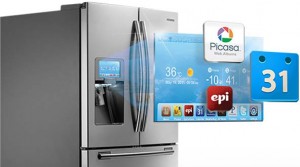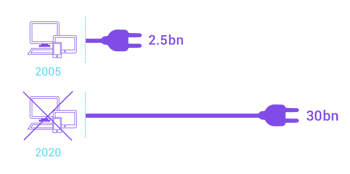Consumers don't care about the Internet of Things.
Okay, most of them don't.
All too often, the Internet of Things looks like this.
The Samsung T9000 is a wifi-enabled smart fridge that allows users to Tweet via a touchscreen embedded on the door. It retails for USD 4,000.
Is tweeting via a fridge the next wave of the social web? Our bet is no.*
* We know, yet another bashing for smart fridges. Which innovator will nail the smart fridge that truly serves consumers already equipped with smartphones with more useful information and greater convenience?
Let's focus on people for a minute.
What do consumers care about?
At heart, human beings have a set of unchanging, fundamental needs and wants. Just a few:
- Physical health
- Mental wellbeing
- Safety and security
- Connection to loved ones
Consumers will lavish love and attention on products, services and experiences that unlock new ways to serve these (and other) imperatives.
In 2014, then, consumers will embrace a network of connected objects that does just that. An INTERNET OF CARING THINGS.
2. Technologies converge
Four forces are paving the way for the explosion of the INTERNET OF THINGS in 2014.
- Cheaper and more efficient wireless connectivity chips. Making it viable to add connectivity to a whole range of new objects, from toothbrushes to bike locks.
- Rising adoption of cloud storage means more consumers will now have a place to put all the data that the INTERNET OF CARING THINGS will create.
- Ultra-precise geo-location. Improved smartphone technologies will allow a consumer’s physical location to be known with ultra-precision (Apple’s iBeacon, part of iOS7, allows location to the nearest centimeter): a necessary condition for some interactions with the INTERNET OF CARING THINGS.
- The crowdfunding revolution has unleashed a never-before-seen wave of hardware innovation. All kinds of objects are being made smart; consumers can choose the winners.
These changes are driving the demand for a network of CARING objects, designed to protect and assist people in their daily lives.
Caring Objects
At last, smart objects that put people first.
The INTERNET OF CARING THINGS means connected objects that serve consumers’ most important needs: physical and mental wellbeing, safety, security, oversight of loved ones, and more.
You’re probably already familiar with the innovations that have blazed an early CARING trail. The Nest smart thermostat*, NIKE fuelband and Fitbit, for example.
But now, as consumer demand and technological capacity converge, the INTERNET OF CARING THINGS will evolve in exciting new directions.
Check out the examples below – divided into five categories of CARING – for a glimpse of these…
* Indeed, just after we first wrote about the INTERNET OF CARING THINGS in December 2013, Google placed a USD 3.2 billion bet on it with their purchase of Nest Labs. Signal enough that this is a trend worth following? ;)
INTERNET OF HEALTHY THINGS
Connected objects that weave self-tracking through daily life will supercharge self-improvement of fitness and physical wellbeing.

Cuptime
Chinese smart cup allows users to track hydration levels
January 2014 saw Cuptime reach its Demohour crowdfunding target. Designed in China, the plastic cup connects wirelessly to a cellphone, allowing consumers to monitor their water intake. Users input their height and weight, and Cuptime then enables them to track whether they’re drinking enough, assigning a ‘hydration performance’ score.
Athos
Smart fitness suit tracks and visualizes muscle activity
Unveiled in November 2013, Athos is a fitness system designed to function like a personal trainer. Sensor-fitted apparel and a wearable device track exertion across 22 different muscle groups by recording electrical activity produced by muscles. This information is then transmitted wirelessly to a mobile app, where users can see which muscles they are using and how. The app also shows breathing and heart rate information, and can help track balance, cadence and form. The machine-washable training top and shorts cost USD 99 each, and the wearable device costs USD 199.
Stir Kinetic Desk
Smart desk tracks health data and encourages activity
Announced in September 2013, the US-created Stir Kinetic Desk is designed to help individuals remain well at work. Priced at USD 3,890, the desk is controlled via a built-in touchscreen, where individuals can store information about the height at which they prefer to sit and stand. With a double tap on the screen, the desk moves up or down. Embedded thermal sensors track calories burned, while ‘Active Mode’ causes the desk to rise and fall – as a reminder to change position. Over time, the Stir Kinetic Desk ‘learns’ about an individual’s preferences and adapts to these.
INTERNET OF MINDFUL THINGS
Stressed, time-poor, over-stimulated consumers will expect the INTERNET OF CARING THINGS to attend to their mental wellbeing, too.
NeuroOn
Smart sleep mask increases productivity by promoting power napping
Reaching its target on Kickstarter in December 2013, the NeuroOn sleep mask monitors brain waves, muscle tension and eye movements to determine the most efficient sleeping pattern for its wearer. Claiming to cut sleep time to between two and five hours a day, the mask is expected to ship in July 2014 for an estimated price of USD 250.
Vigo
Wearable device tracks and optimizes individuals’ alertness
Surpassing its Kickstarter goal in February 2014, Vigo is a US-created wearable device that tracks alertness. An in-built infrared sensor and accelerometer track blinking and body movement, and sync data to a mobile app. When Vigo detects tiredness, it ‘nudges’ the wearer via customizable smartphone settings, including gentle vibrations and energizing audio tracks. Over time Vigo learns the wearer’s alertness patterns, automatically suggesting activities to optimize performance. Vigo retails for around USD 79.
INTERNET OF SAFETY THINGS
Physical safety is one of the most fundamental human needs. Now, a network of CARING objects can unlock new ways to serve it.
Skully
Smart motorcycle helmet helps eliminate blindspots using cameras and heads-up display
October 2013 saw US-based Skully Helmets debut the Skully P1: a smart motorcycle helmet with an integrated heads-up display (HUD). The P1 HUD includes a 180-degree rear-view camera system which relays images onto the HUD, enabling riders to see what’s beside or behind them, and eliminating blind spots.
Nest
Google buys smart home appliance manufacturer for USD 3.2 billion
February 2014 saw Google complete its acquisition of Nest Labs for USD 3.2 billion. Following on from its smart thermostat, the company’s second product is the Nest Protect, a two-in-one smoke alarm and carbon monoxide detector, launched in October 2013 priced at USD 129. The device contains an ultrasonic activity sensor which activates an early spoken warning (rather than a noisy alarm) so that consumers can check whether the cause of smoke is serious – if it isn’t, they can simply wave at the device to ensure the alarm doesn’t activate. Nest Protect can also send warnings about potential hazards or low battery power to a cellphone or tablet.
INTERNET OF SECURITY THINGS
A truly smart network of connected objects means enhanced oversight and control of valuable or cherished possessions.
The Cricket
Smart bike alarm automatically sends cellphone notifications
Surpassing its funding goal on Indiegogo in November 2013, The Cricket is a Bluetooth-enabled bike alarm that syncs with a mobile app. The US-designed device detects when the alarmed bike is touched or moved, and automatically sends a push notification to the owner’s cellphone. If the bike is stolen, cyclists can alert The Cricket network and every connected device will scan for the lost alarm, sending an alert if the bike is located. Priced at USD 39, the lightweight alarm is powered by a coin cell battery and has a range of 150 feet.
Goji Smart Lock
Smart lock sends picture alerts to cellphone
When the Goji Smart Lock detects that a visitor is at the door – via a built-in motion sensor – it automatically sends a picture of that visitor to its owner’s smartphone. Goji can be unlocked remotely, or users can send electronic keys to visitors, allowing entry via their cellphone. The Goji Smart Lock retails at around USD 299.
INTERNET OF FAMILY THINGS
Supercharged oversight of the physical world doesn’t only apply to possessions. It will also help consumers stay close to their loved ones.
Toymail
Talking toys allow parents to send voicemails to kids
Surpassing its target on Kickstarter during December 2013, Toymail is a range of talking toys that allow parents to stay in touch with their kids when traveling. The wifi enabled ‘Mailmen’ sync with an iOS app that allows parents to record and save voicemail messages, which are played through the toy in each character’s voice. Kids can reply to the last message received via a button on the device, with replies played back through the app.
Mother
Smart device monitors home and family
Launched in January 2014, Mother by Sen.se is a US-designed monitoring system for home and family. The central device connects to a user’s home wifi network and then works with separate mobile sensors to monitor the location of family members and the use of objects within the home. The system can also track metrics such as sleep quality and running distances. Mother is priced at USD 274.
T.Jacket
Smart jacket lets parents give remote 'hugs'
The T.Jacket allows parents and caregivers to give remote ‘hugs’ via pressurized sensors that are activated by a cellphone app. Motion sensors in the jacket’s lining send an alert when anxiety is detected, enabling parents to give real-time reassurance. The app also allows caregivers to set the strength of the ‘hug’ and monitor how the child responds to it.

